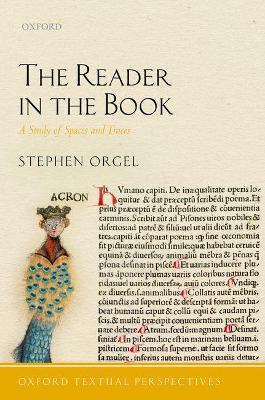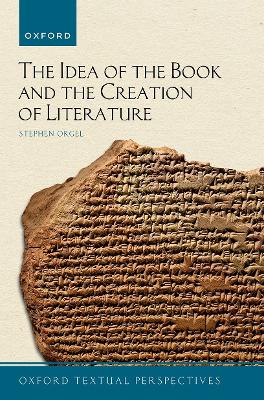Oxford Textual Perspectives
2 total works
The Reader in the Book is concerned with a particular aspect of the history of the book, an archeology and sociology of the use of margins and other blank spaces. One of the most commonplace aspects of old books is the fact that people wrote in them, something that, until very recently, has infuriated modern collectors and librarians. But these inscriptions constitute a significant dimension of the book's history, and what readers did to books often added to
their value. Sometimes marks in books have no relation to the subject of the book, merely names, dates, prices paid; blank spaces were used for pen trials and doing sums, and flyleaves are occasionally the repository of records of various kinds. The Reader in the Book deals with that special class of books
in which the text and marginalia are in intense communication with each other, in which reading constitutes an active and sometimes adversarial engagement with the book. The major examples are works that are either classics or were classics in their own time; but they are seen here as contemporaries read them, without the benefit of centuries of commentary and critical guidance. The underlying question is at what point marginalia, the legible incorporation of the work of reading into the text
of the book, became a way of defacing it rather than of increasing its value-why did we want books to lose their history?
their value. Sometimes marks in books have no relation to the subject of the book, merely names, dates, prices paid; blank spaces were used for pen trials and doing sums, and flyleaves are occasionally the repository of records of various kinds. The Reader in the Book deals with that special class of books
in which the text and marginalia are in intense communication with each other, in which reading constitutes an active and sometimes adversarial engagement with the book. The major examples are works that are either classics or were classics in their own time; but they are seen here as contemporaries read them, without the benefit of centuries of commentary and critical guidance. The underlying question is at what point marginalia, the legible incorporation of the work of reading into the text
of the book, became a way of defacing it rather than of increasing its value-why did we want books to lose their history?
The Idea of the Book and the Creation of Literature explores the intersection of literary history and the history of the book. For several millennia, books have been the material embodiment of knowledge and culture, and an essential embodiment for any kind of knowledge involving texts. Texts, however, do not need to be books-they are not even necessarily written. The oldest poems were composed to be recited, and only written down centuries later. Much of the
most famous poetry of the English Renaissance was composed in manuscript form to circulate among a small social circle. Plays began as scripts for performance. What happens to a play when it becomes a book, or to a collection of poems circulated among friends when it becomes a volume of sonnets? How do
essays, plays, poems, stories, become Works? How is an author imagined? In this new addition to the Oxford Textual Perspectives series, Stephen Orgel addresses such questions and considers the idea of the book not simply as a container for written work, but as an essential element in its creation.
most famous poetry of the English Renaissance was composed in manuscript form to circulate among a small social circle. Plays began as scripts for performance. What happens to a play when it becomes a book, or to a collection of poems circulated among friends when it becomes a volume of sonnets? How do
essays, plays, poems, stories, become Works? How is an author imagined? In this new addition to the Oxford Textual Perspectives series, Stephen Orgel addresses such questions and considers the idea of the book not simply as a container for written work, but as an essential element in its creation.

